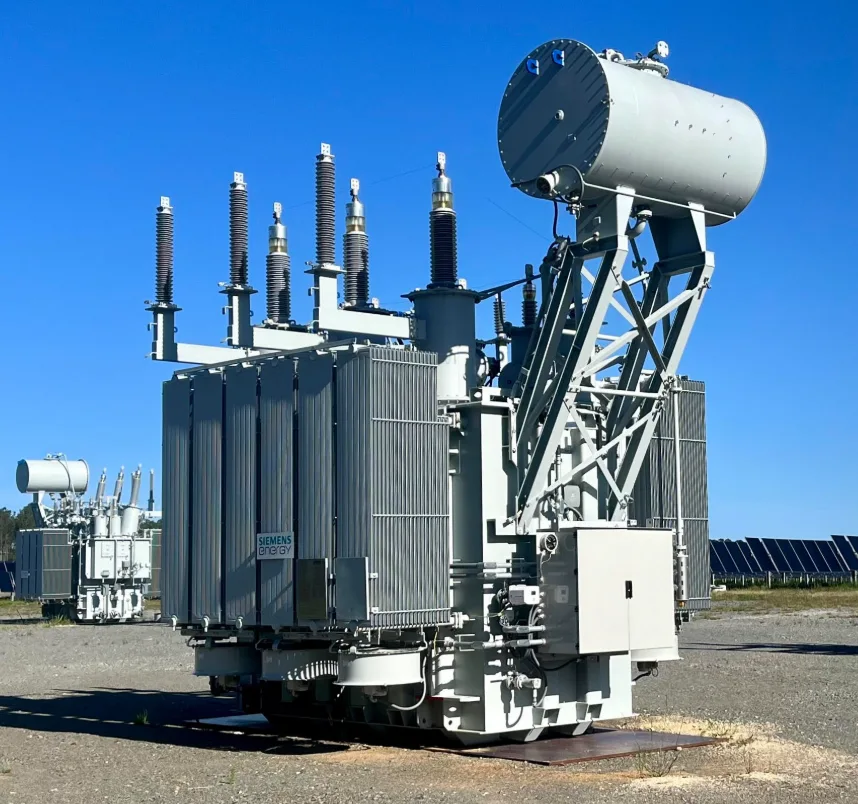전력 시스템의 경우, 도체 재질의 선택은 성능의 성패를 좌우할 수 있습니다. 구리 대 은의 전기 전도도 전기 공학에서 가장 중요한 비교 중 하나를 나타내며, 이러한 재료가 다양한 전력 응용 분야에서 어떻게 수행되는지 이해하는 것은 최적의 시스템 설계에 매우 중요합니다.
결론적으로: 은은 63 x 10^6 지멘스/미터로 가장 높은 전기 전도도를 가지고 있습니다(구리보다 약 7% 높음). 그러나 구리의 59 x 10^6 지멘스/미터 전도도에 뛰어난 비용 효율성과 내구성이 더해져 대부분의 전력 응용 분야에 선호되는 선택입니다.
전기 전도도 이해: 전력 시스템의 기초
전기 전도도는 재료가 전류를 얼마나 잘 전달하는지를 나타내는 것으로, 저항률이 낮을수록 전하의 흐름이 더 원활해집니다. 구리와 은은 모두 이 분야에서 탁월하지만, 실제 적용 측면에서는 상당한 차이가 있습니다.
주요 전도도 정보:
- 은 전도도: 63 x 10^6 지멘스/미터
- 구리 전도도: 59 x 10^6 지멘스/미터
- 구리는 전기 응용 분야를 위해 정기적으로 99.98% 순도로 정제됩니다.
전력 송전 및 배전 시스템
고전압 전력선
구리 건축용 전선은 전도성이 뛰어나 알루미늄보다 절연성이 낮고 전선관의 크기도 작아 더 많은 구리선을 전선관에 설치할 수 있습니다. 지중 송전 분야에서 구리는 체적 전기 및 열 전도도가 높아 최대 400kV의 고압 및 초고압으로 작동하는 지중 송전선에 적합한 도체 재료입니다.
구리가 전력 분배를 지배하는 이유:
- 뛰어난 열전도도(알루미늄보다 60%가 더 우수)로 에너지를 절약하고 방열을 가속화합니다.
- 우수한 크립 특성으로 연결부 풀림을 최소화합니다.
- 산화구리는 전기를 전도하므로 연결 과열을 방지합니다.
건물 전기 시스템
12번(AWG) 구리선은 건물의 분기 회로 배선에 가장 일반적으로 사용되는 규격입니다. 이 소재의 신뢰성 덕분에 업계 표준으로 자리 잡았으며, 구리 배선은 미국 전역의 모든 전기 도체 관련 법규, 조례 및 규정을 준수합니다.
실버의 제한된 역할: 은은 높은 전도성을 제공하지만, 가격이 비싸 건축 시스템에 널리 사용하기 어렵습니다. 은은 산화되어 전기 전도체로서의 효율을 잃는 경향이 있고, 전도성 증가폭도 상대적으로 미미하기 때문에 대부분의 경우 구리가 더 적합합니다.
재생 에너지 응용 분야
태양광 발전 시스템
구리는 기존 화력 발전소보다 재생 에너지 발전에서 더 큰 역할을 하며, 재생 에너지 기술은 설비 용량당 4~6배 더 많은 구리를 필요로 합니다. 그러나 은은 태양광 패널 자체에서 매우 중요한 특수 역할을 합니다.
태양광 발전의 은:
- 은은 뛰어난 전기 및 열 전도성으로 인해 태양광 패널에 이상적입니다.
- 은 페이스트는 태양 전지에 사용되며 높은 전도성으로 인해 태양 에너지를 효율적으로 수집하고 전송할 수 있습니다.
- 잠재적인 대체 금속은 태양광 패널당 에너지 출력 측면에서 은과 일치할 수 없습니다.
태양광 인프라의 구리:
태양전지는 일반적으로 입사하는 햇빛 20%를 전기로 변환하는데, 구리 접촉 실리콘 태양전지는 비용을 절감하기 위한 선호되는 도체 물질로서 은의 중요한 대안으로 떠오르고 있습니다.
풍력 에너지 시스템
전 세계적으로 구리 사용량의 대부분은 발전기와 모터 코일을 포함한 전기 배선에 사용됩니다. 풍력 터빈은 다음과 같은 용도로 광범위한 구리 배선이 필요합니다.
- 발전기 권선
- 전력 전송 케이블
- 제어 시스템
- 그리드 연결 인프라
자동차 및 전기 자동차 애플리케이션
기존 자동차 시스템
자동차 산업용 구리선 응용 분야에는 사후 전기 부품, 배터리 케이블 및 충전소, 차폐 제품, EV 배터리 상호 연결용 버스바, 에어백 등이 있습니다.
전기 자동차 혁명
자동차 산업은 구리와 은 응용 분야 간의 치열한 경쟁이 벌어지는 분야입니다.
전기자동차의 은:
- 배터리 전기 자동차는 ICE 구동 차량보다 최대 2배 많은 은을 함유하고 있습니다.
- 은의 뛰어난 전기적 특성으로 인해 자동차 응용 분야의 광범위하고 성장하는 범위에서 대체하기 어렵습니다.
- 충전소는 훨씬 더 많은 은을 요구할 것으로 예상됩니다.
EV 인프라의 구리:
- 하이브리드 자동차와 SUV는 배터리에서 전력을 공급받는 구리 권선 유도 모터를 사용합니다.
- 구리 로터 모터는 테슬라 차량에 사용되며 전기 로드스터는 3.7초 만에 0-60mph를 달성합니다.
전자 및 통신
고주파 애플리케이션
은은 비용이 많이 들고 인장 강도가 낮아서 조인트 도금, 슬라이딩 접촉 표면, 30MHz 이상 주파수에서 사용되는 고품질 동축 케이블의 도체 도금과 같은 특수 용도로만 사용이 제한됩니다.
실버의 전문 전자 역할:
- 은은 일반적으로 산업용 스위치 및 자동차 접점과 같은 특수 전자 장치 및 민감한 시스템의 구성 요소로 사용됩니다.
- 은은 특히 신뢰성과 일관된 성능이 중요한 의료 기기 및 항공 우주 공학과 같은 민감한 전자 제품에 널리 사용됩니다.
통신 인프라
광섬유가 통신 분야에서 널리 사용되고 있지만, HDSL(고속 디지털 가입자 회선)과 ADSL(비대칭 디지털 가입자 회선)에는 여전히 구리선이 사용됩니다.
산업 및 항공우주 응용 분야
고성능 요구 사항
니켈이나 은으로 도금된 와이어는 항공우주, 국방, 석유화학, 원자력, 의료 분야에서 자주 사용됩니다. 이러한 산업에서는 비용보다 성능을 우선시합니다.
고급 제조:
맞춤형 구리 및 은 권선의 적층 제조는 최적화된 소재, 맞춤형 기하학 및 통합 열 관리 전략을 통해 효율성을 동시에 개선할 수 있는 기회를 제공합니다.
모터 응용 분야
고효율 모터는 구리 함량이 더 높아 효율이 더 높으며, 수명이 더 길고 발열량도 적습니다. 미국 내 모든 공장이 모터 시스템을 업그레이드한다면 미국 산업계는 연간 1조 4천억 원을 절약할 수 있을 것입니다.
비용 대비 성과 분석
경제적 고려 사항
지구상에는 은보다 자연적으로 존재하는 구리의 양이 훨씬 많기 때문에, 더 희귀하면서도 성능이 더 뛰어난 금속을 생산하는 데 드는 비용이 훨씬 더 많이 듭니다.
실제 저항 비교:
24게이지, 1000피트 길이의 은선과 구리선의 저항 차이를 보면 구리선의 저항이 단 2옴만 더 높다는 것을 알 수 있습니다.
장기적 가치
시스템 수명 동안 뛰어난 성능과 신뢰성은 실질적인 경제성으로 이어지므로 구리는 항상 가장 비용 효율적인 배선 재료입니다.
신기술과 미래 트렌드
5G 및 고급 통신
5G 기술은 반도체 칩, 케이블, MEMS(미세전자기계시스템), 사물인터넷(IoT) 장치 등 은이 필요한 부품에 사용되면서 은 수요를 견인하는 또 다른 주요 동력이 될 것으로 예상됩니다.
고급 에너지 저장
에너지 저장 시스템을 사용하면 전기 공급과 수요의 시간 이동과 피크 절감이 가능하므로 광범위한 구리 인프라가 필요합니다.
재료 선택 지침
구리를 선택할 때
구리를 선택하는 이유:
- 전력 송전 및 배전
- 건물 전기 시스템
- 모터 권선 및 산업 장비
- 비용에 민감한 애플리케이션
- 장거리 전력 운반
은을 선택할 때
은을 고려해보세요:
- 30MHz 이상의 고주파 응용 분야
- 정밀 전자 부품
- 의료 및 항공우주 응용 분야
- 태양광 패널 제조
- 중요한 자동차 전기 접점
결론: 올바른 선택하기
전력 처리 분야에서 구리와 은 중 어떤 것을 선택할지는 궁극적으로 성능 요구 사항과 경제적 현실 간의 균형을 어떻게 맞출지에 달려 있습니다. 가정과 가전제품에 사용되는 표준 전선의 경우, 구리의 약간 낮은 전도도는 대개 충분히 수용 가능하며 전기 흐름을 크게 방해하지 않습니다.
주요 요점:
- 구리는 전도성, 비용 및 내구성의 최적 균형으로 인해 대부분의 전력 응용 분야에서 여전히 주력으로 사용됩니다.
- Silver는 7% 전도도 이점이 더 높은 비용을 정당화하는 특수 고성능 응용 분야에서 탁월합니다.
- 재생 에너지 전환으로 인해 두 재료 모두에 대한 수요가 증가하고 있습니다.
- 미래 기술은 서로 다른 시스템 구성 요소에서 두 재료를 전략적으로 사용해야 할 가능성이 높습니다.
이러한 재료 특성과 적용 분야를 이해하면 주택 배선, 재생 에너지 시스템, 최첨단 전자 제품 등 어떤 분야에서든 최적의 시스템 설계를 보장할 수 있습니다. 핵심은 장기적인 경제 및 운영 요소를 고려하면서 특정 성능 요건에 맞춰 재료 성능을 최적화하는 것입니다.






